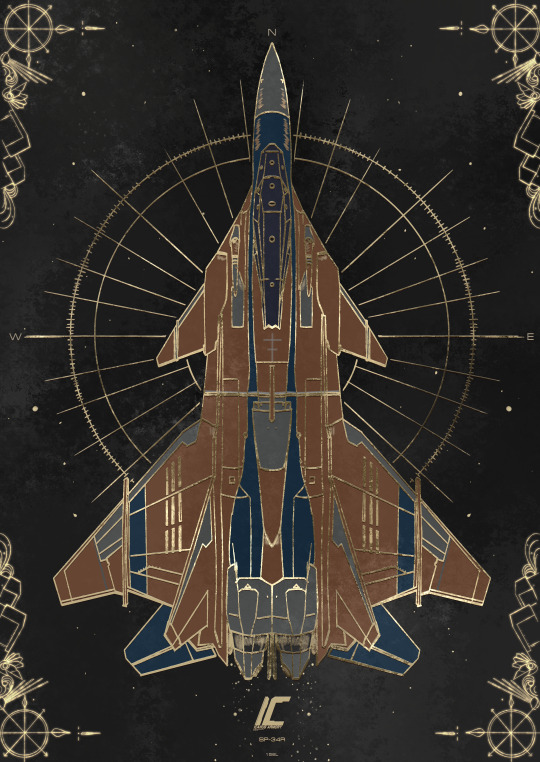Text
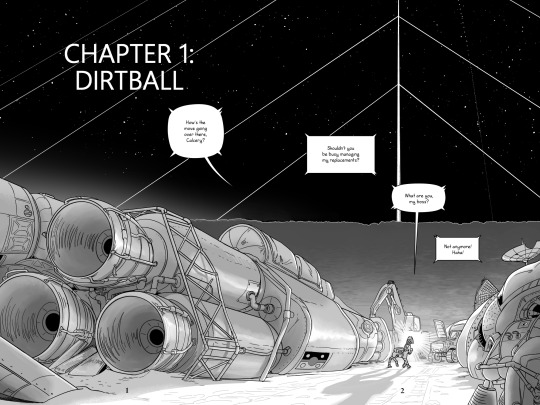


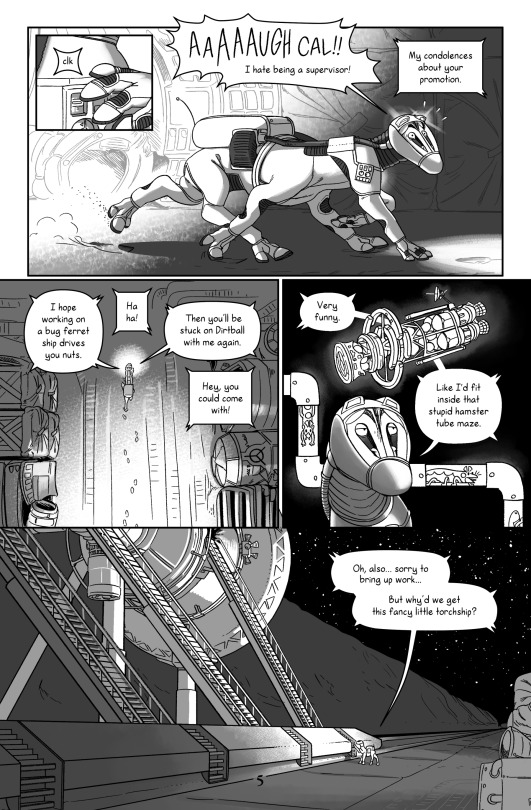

I finally (got help) slapping Wordpress into shape and Runaway to the Stars is now releasing as a public webcomic! Thank you so much for your support over the years, and sticking with me while I'm slowly chewing my way through this book. I'm very excited to share this story! It'll be updating every Tuesday, Thursday, and Saturday thanks to the massive Patreon backlog. Patreon will continue to update as I finish pages, which happens on a sporadic non-schedule.
If you experience bugs with the site report them to me. Some things may occasionally break, as coding problems tend to be a very "whack-a-mole" affair; and I'm still getting used to the interface.
7K notes
·
View notes
Text
Like in most starships, and indeed like in any kind of ships through history, the mess hall was the heart of the Johann Sebastian Mastropiero. Of course, most of the rest of the ship was propellant tanks, engines, and cargo bays. But what truly mattered was this place, this sacred place with food and drink where the crew could relax after a long day sailing the aether. They were the ones who kept this old bird flying, they were the lifeblood of the Mastropiero, and the mess hall was its heart. At least according to the crew themselves. The cargo's insurance was probably higher than theirs after all.
“Mess hall” might also have been a grandiose name for it. It was basically a table, some especially uncomfortable chairs bolted to it so they didn't flew away in 0g, several handles to walk through while in freefall, an old booth that seemed -and probably was- taken from an abandoned fuel space station, and a counter bearing the scars of poorly prepared food, because you get tired of instant guiso and mushroom chips after a while.
It was Human spacer tradition for the Captain to have a last dinner with the passengers before landing at the destination, so never mind the mess, in a way, the mess hall also needed to show the ship's history. And it did, with the pictures hanging on the paneling. A faded photograph of the crew during the Machine War, and then newer ones, an old captain giving a thumbs up at a newly repainted ship, a group of people wearing smokings doing a comedy sketch, Beto as a kid sitting on the commands with the hat on, an asado under three moons that legend has it bring good luck, and more. The latest picture was just next to the oldest one, with a lanky, angular-faced human male with a mate gourd on hand, a small shark-like girl wearing sunglasses and doing a peace sign, and a cactus-like man with his leaves in a sarcastic attitude, under that same sky as the three lucky moons.
Freefalling, and yet somehow looking busy while at it, Beto arrived at the mess hall to heat up water for the mate and start up his morning shift. As he rubbed his eyes he saw Ragua hanging by her squalene tail on a handle in the "ceiling", her headphones at a high enough volume to tell she was listening to Hermética. Siusini was sitting conspicuously in the center of the booth table -not that he needed to eat anyways-, while holding a bunch of crystals around him that reflected on his leaves in beams of focused light, like glittering rainbows. Beto wondered if Pink Floyd would perhaps be a better soundtrack in this case.
"Mornin', people." Beto yawned as he turned on the kettle, his weightless body hanging as he waited for the water to heat up -not boil, this was mate after all.
"MORNIN', BETO!" Ragua said from the ceiling, her voice more high-pitched than usual, perhaps because of her usual excitement, perhaps because of the metal screaming that seemed to envelop her. Siusini's chromoplasts shifted into a greeting hue.
"What are you listening to, Ragua?" Beto asked as the water began to heat.
"It's that music you told me about last night!" She answered, perhaps a bit offended that Beto didn't notice. "I love it, though some lyrics are hard to understand..." Beto nodded thoughtfully. He was amazed at how quickly she had picked up Rioplatense Spanish in any case.
"Yeah, I told you, they talk a bit about the things that happen in my history tapes..."
"Of course you like them because of that." She grinned while narrowing her eyes playfully. For various reasons, perhaps because she was part of it, history just didn't sit well with her. "But that's the fun part. The voices go... like all low and deep like yours..." Ragua did a frighteningly good rendition of Ricardo Iorio, "...and then it goes all like YEEEEEEAHHHH." Ragua did an even more frightening impression of Claudio O'Connor. Beto just smiled, amused.
"I don't sing like that."
"You don't sing. At all." Ragua teased back.
"Shut up." Beto said. It was true, he couldn't sing at all.
"But what I like the most is the controls." Ragua continued as the album rocked on, her fins shifting to the music.
"You mean instruments?" Beto corrected her word use, helpfully.
"Yeah! Those! It's just so AWESOME... Like, I love the sound, the noise, it feels like when prey moves on the ocean, when you're about to just bite on it? You know? So nice." She said, a bit too giddy, kicking her finned legs against the ceiling.
"That's cool man." Beto answered in a monotone as he poured water on the thermos.
Perhaps not wanting to awaken her predatory instincts, he turned to Siusini.
"What about you, you finally gave up engineering to become a table decoration?" Beto bantered in friendly confidence. Siusini didn't seem to listen through his sound translator. His leaf patterns shifted in ways that were difficult even for the experienced Beto to decipher.
"Sius'?" He asked again. The chromoplasts reacted.
"GOOD DAY BETO." The patterns of colors said. Beto knew how to read them, and he'd better, since Siusini was his engineer after all. Not a good relationship for miscommunications.
"Testing out the crystals you bought the other time?" Beto said while pouring himself a mate.
"RIGHT."
"Are they, uh, good?" Beto asked, not sure how to put it.
"VERY GOOD." the leaves answered, as Siusini shifted the crystals to what Beto assumed was a more pleasant light show for him.
Beto sipped his second -always the best one, after the yerba is settled- mate of the morning and watched the crystals dance in Siusini's tendrils. Being a heterotroph himself, Beto didn't quite get what was so interesting about the focusing crystals that many photosynthetic species enjoyed, but visually, they were very striking.
"You know." Beto said with his usual curiosity, "You never quite told me what does that light show feels, exactly." Siusini's color shifted to one of amusement, and Beto sighed, wondering what he was gonna say.
"EXPLAINING IS DIFFICULT. WE HAVE TALKED ABOUT THIS." the leaves said.
"Oh come on. You can explain how a dark-energy inductor works, but not that?" Beto bantered back, knowing he won the argument.
"WILL TRY THEN." Siusini said, his color still in an ironic hue.
The communication leaves of Siusini shifted a bit in some patterns Beto didn't recognize. "IT IS LIKE. GOOD FOOD. VERY GOOD FOOD. NARCOTICS[?]. [?]."
Beto blinked a couple times, trying to understand. The last two patterns looked familiar, but... Then he noticed Siusini's leaves and tendrils shifting in a rather strange way... and he groaned.
"You dirty motherflower, I shouldn't have asked..." Beto groaned again in the tone of someone defeated while Siusini's leaves shone brighter in their amused state. He just grabbed his thermos and mate and decided to go to the cockpit.
Ragua, always up for some good gossip but who wasn't keeping up with the conversation because of her headphones, followed Beto with a teasing smile. "Wait, wait, what did Sius’ say?" she asked.
"Never mind, you don't wanna know." Beto said as he made his way to the cockpit.
"Come on, tell me, what was it?!"
"Ragua, no."
"COME ON, TELL ME!" Ragua insisted as she hovered on 0g after him, grabbing his leg while he grumbled. "BETITO, COME ON, TELL ME, WAS IT FUNNY? I KNOW IT WAS FUNNY!" She was not gonna let it go and he knew it. But never mind, first it was time to do trajectory corrections and get to work.
And so, another day started in the good spaceship Mastropiero, 614 years after Gagarin.
#oh it's nice to read their interactions#love seeing the day to day /routine /casual moments of the crew#campoestela
22 notes
·
View notes
Text

A pair of antique push-props buzz an electric wing-body on Esther’s Plateau. Sport flying is popular here, but it’s not a free for all. The sector air control investigators are already waiting back at the coriolis port
31 notes
·
View notes
Text
General question to reblog and tell me in the tags;
You go into a used bookstore - what are the two sections you head to first?
#middle grade fantasy#and adult sci-fi / fantasy#I want to see if I can find books from my childhood that I read in the library#a lot of the series I own are incomplete because I didn't buy the books I could borrow#one day I'll have a complete set of la quête / les mondes d'ewilan lmao
7K notes
·
View notes
Text

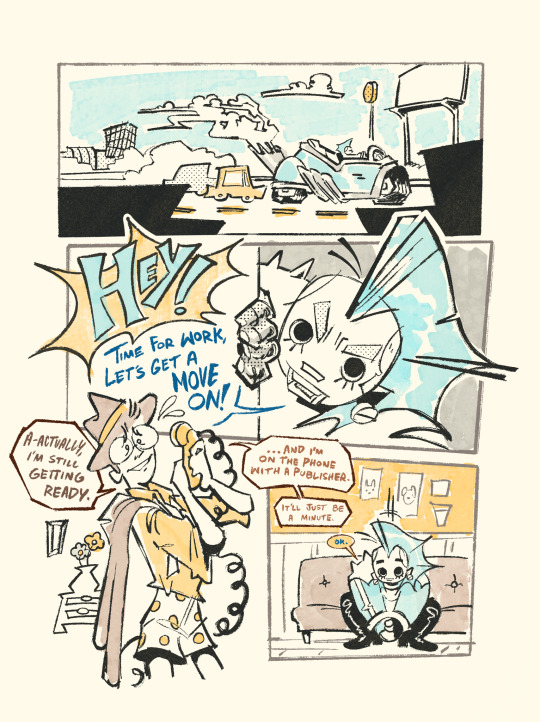



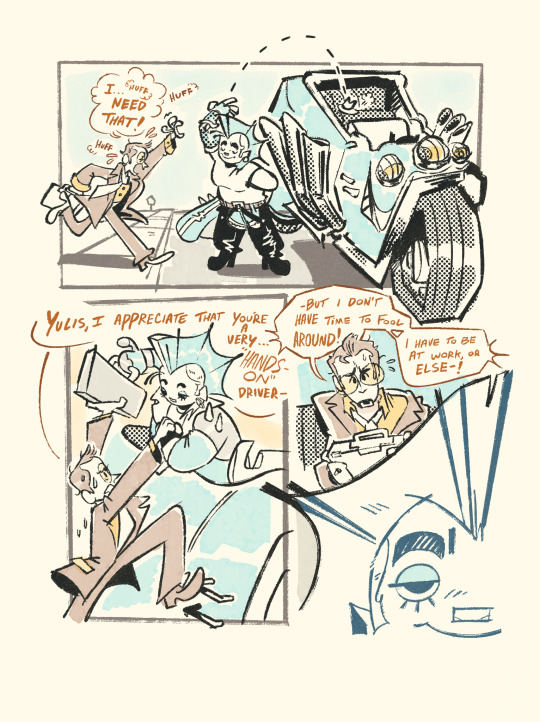

Hat Trick Hustle 🧳
55 notes
·
View notes
Photo
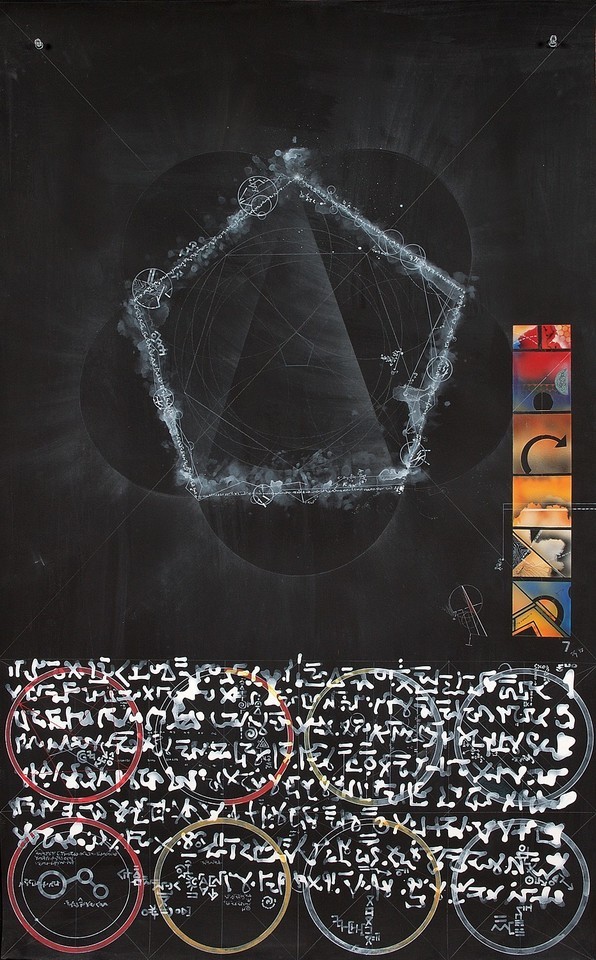






Timothy C. Ely(American, b.1949)
Black Map No 1, 2, 3, 4, 5, 6, 7, acrylic, dry pigment on paper, via
3K notes
·
View notes
Text
Worldbuilding: Galactic Empires

My only complaint about the Prequels is that they needed MORE politics
If you've watched Dune recently, you must have noticed the whole Emperor and space noble families thing. And yes, it's likely you heard that in WH40k too… and I HOPE you know that's where the God Emperor came from, since WH40k took "inspiration" from everywhere from Dune to Star Wars. Which also has a Galactic Empire. Like so many other science fiction franchises.
In fact, if you're a science fiction fan, it's very likely that you're familiar with space or galactic empires, they seem to be common as dragons in fantasy. Despite the fact that an empire doesn't sound very futuristic, does it?
Where did all these Galactic Empires come from? Are they just a narrative tool or are they an actual possibility? How would states and societies work in space? Let's find out, and maybe I can give you some ideas on how to write fun galactic "empires" from both a narrative and plausibility perspective.
This is going be a long post. Perhaps my longest yet. But I hope you have as much fun reading it as I did writing it. Click down to continue.
First of all, where did these space emperors come from? In another post, I've talked about the influence of the idea of the rise and fall of the Roman Empire in English-language fiction. However, in science fiction, I would say the influence is more direct. The Foundation trilogy of Isaac Asimov, one of the foundational (lol) works of science fiction, was intended by the author, very explicitly, as a retelling of The History of the Decline and Fall of the Roman Empire by Edward Gibbon in a science fiction setting. He probably wasn't the first to think about a space empire, I'm very sure the term is older, but he certainly popularized it as a staple of science fiction. Now, if your contact with science fiction comes from movies, when you hear Galactic Empire you're of course thinking about Star Wars. But yes, Star Wars is also the same retelling, because Lucas was inspired in both Asimov AND Gibbon, even though I think we should appreciate Lucas' ability to bring it to life in the screen. Certainly, Isaac Asimov wasn't the first or the last to take inspiration in history to tell stories about the future.

The most influential science fiction work of all time.
At this point you're probably telling me (or not, I don't know you) about all other sorts of science fiction works that DON'T have galactic empires, or better yet, those that don't just transpose historical societies into the far future and imagine something entirely new (my personal recommendations on this area are Banks and LeGuin). And you'd be right. But the concept of a space empire seems popular and long-lived, much like feudalism in the fantasy genre, everyone has a picture of a sorts when a videogame or a book talks about a "galactic empire" or "galactic republic" or a "federation", an "empire" much like a shorthand name for "a country In Space", regardless of the presence of an actual Emperor or not. And so, it's worth exploring how this trope could, or not, work, so we can see the possible alternatives or more fun ways to approach it.
Besides, that's the title of the post. Galactic Empires.
So, let's approach this from the perspectives of Space, Time (or to keep with the theme, Spacetime) and Technology, and lastly, the most fun part, we'll explore some fun variations on this idea of galactic empires and societies.
Space:
Space is big, and I won't quote the Hitchiker's Guide to the Galaxy here, it would be groanworthy at this point. Let's do a quick exercise instead. Let's image a "modest" space empire, not even galactic, 2000 light-years across. Sounds quite big, it encompasses most of the visible stars we can see from Earth… however, if you project it into a galactic map, it's actually a very small piece of sky, actually 2% of the entire galaxy which is about 100.000 ly across. Now, according to the Atlas of the Universe, there are 600 million stars in a 5000 ly radius from the Sun. Jesus Christ. This is actually hard to estimate accurately as the true number of red dwarfs and brown dwarfs, the dimmest stars, are hard to count, but we already know those have planetary systems as complex as our own Solar System, even planets that could bear life. Let's scale back to our 2000 ly across space empire, again, just a small cozy corner of the Milky Way Galaxy, something that would look like a small, even tiny, nation in any setting of a galactic scale. This gives us 240 million stars (from the estimated 200 billion stars of the galaxy) in this space, which is still completely insane but let's work with that.
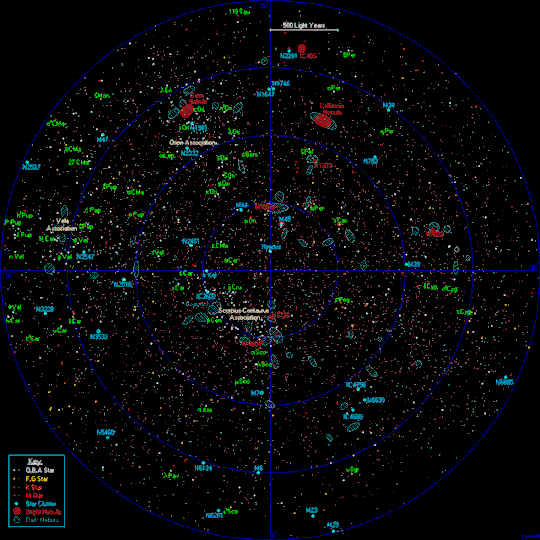
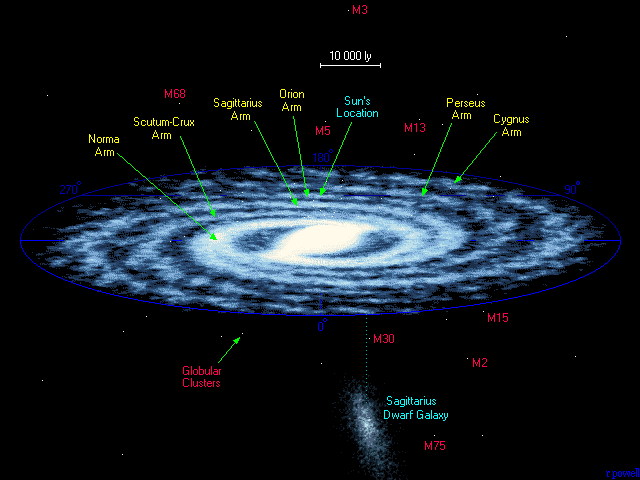
From Atlas of the Universe, so you can compare and contrast, the stars 2000 ly from the sun (ONLY the brightest ones), and the entire Milky Way. Notice how small 2000 light years truly are at that scale.
Even if I just told you that all of those systems might be as complex and rich as the Solar System, let's rather arbitrarily say only 5% of those 240 million are worth of note. Not necessarily having life (no way I'm getting into that yet), just worth visiting or living in for the resources or the views or the cantinas… whatever. That's 12 million star systems. Okay, let's refine this further. Let's say of those 12 million, most of them are the equivalent of gas stations or farmsteads, a couple thousand people at most. The REAL places where the action happens are the systems or worlds where millions of people live, and those are few and far between (this makes both common and narrative sense, as people tend to cluster in population centers where trade, resources, etc. are). Let's say, and let's refine this further so I don't get outrageous numbers, the average population of those systems is 100 million (about the size of Mexico, Vietnam or Japan. Many sci-fi works throw worlds of billions like Earth like nothing). And those systems are… uh, like 2% of THOSE 5% 'systems of note' (a flimsly concept already but play along). That's 2% of 12 million. We got 240.000 systems or worlds the population size of entire countries, with all that implies (economy, culture, politics). Of course, 240.000 multiplied 100 million gives this speculative fictional empire a total population of… (Jesus Christ, not the scientific notations), 2.4e+13, or TWENTY FOUR TRILLION PEOPLE.
Let's wind back and remember I tried my best to make a "small" empire for a galactic-sized setting, 2000 light-years across, that's just from here to Orion's Nebula for Gagarin's sake! A trillion people is just outside the realm of my imagination, or pretty much anyone's. Can you imagine any kind of goverment system that would be enough to provide any kind of meaningful governance to 24 trillion people? In the case of a space empire, can you imagine a single space emperor, a single person, deciding over them? Keep in mind that emperors don't rule on their own (we'll talk about that), they need bureacrats to make their will done, and vassals to govern their territories in their stead. This would apply even in democratic systems, you need representatives and civil servants and more.
Let's scale back a bit before I go insane. Instead of assuming territory, let's go with population. Assume a spherical cow space empire of… 40 billion people, that's reasonable right? You can picture that in your head? Five times the population of current Earth, no biggie, we can work with that, it's all cool. Now, how big would a goverment for such a population would have to be? We actually have reasonable answers. China has about 10 million civil servants for a population of 1.4 billion people, but that's only the administrators, not including all the teachers, healthcare workers, security forces, laborers, etc. employed by the state. India has 6.4 million for about the same population. Okay, so easy math, let's say that this space empire has 6 million bureacrats for 1 billion people, for our empire of 40 billion people, that gives us a total of 240 million… just bureacrats, nothing else. Yes, you could reduce that with technology by say, half. It still means an entire Mexico-sized country of bureacrats. Imagine.

Entire worlds of this.
NOW I WILL STOP THROWING NUMBERS AT YOU, and let's just think about what this means. If we assume a space empire like the ones common in science fiction, or just any kind of… goverment at all, we're talking about, at the lowest estimates, entire countries worth of state employees, if not whole EARTHS of bureacrats. You can guess how things can get really weird fast. Current goverments as we know them just won't work at all it even if technology gets more powerful. Leaving aside, for now, things like god-like AI adminstration (yeah, have you seen what they are like now?)… to exhert ANY kind of control, FTL or not (more on that below) you would need a very, very autonomous empire, to the point it might as well not exist at all. Why take orders from A Guy who is not only far away but also has no hope at all of actually enforcing them in any meaningful sense? Why call yourself part of his "empire" that not only cannot enforce anything upon you, but also cannot benefit you in any way? Big question, of course, the benefit of a galactic or even smaller empire, but we'll discuss that later.
What could work, however, is that instead of a centralized state like we concieve it today, or even a loose confederation, even loose alliances, even pretty much anything… 'empires' (as in 'countries') In Space could be "united" by common ideas and culture instead of any institution. Perhaps not even a written delcration or constitution, but shared ideas: a culture, a religion, an ideology. Lots of different strong mini-states (that might mean billions of people…) that all claim to be part of the same "civilization", but share no goverment at all at all, just the same 'idea', in a looser way that even the most decentralized goverments you can think of. You can say "well all countries are made up" but these would barely qualify as even that. Not even the Holy Roman Empire was this fake.
Perhaps even a single person as a symbolic focus point of unity? Which would be actually a score for the proponents of galactic empires in the most literal sense. But at the same time, such an Emperor would be completely powerless to interact with the entire galaxy. His plans for, I don't fucking know, education reform or tax breaks, would have to be filtered by literal millions of bureaucrats and vassals that at that point might do whatever the hell on his name. Military-wise, his armies would count as nations of their own. However, the overall guidance of a single person (or constitution…) as a symbol might make otherwise disparate worlds to collaborate on the same causes, being part of the same greater whole no matter the distance. So maybe, instead of a Galactic Emperor, a Space Pope?

OH MY GOD-EMPEROR WAS THE IMPERIUM REALISTIC ALL ALONG? Probably not, but also yes, let's keep talking.
By the way, I'm sure you're tired of big numbers now, but I did one possible calculation for the whole galaxy, a true Galactic Empire. Asuming just 0.2% (400 million) of the 200 billion stars are populated, with an average population of one million, the size of the smallest countries that aren't micronations. The total galactic population would be 40 trillion, or 40,000,000,000,000. Five thousand Earth populations.
Time:
Or rather, space-time. We'll talk about both, because what concern us is the speed of information and trade, and that also limits the size of our empires.
I'm sure you know by now faster-than-light travel is impossible. Most of space based science fiction has it, of course, for narrative purposes. We don't want Our Heroes to spend two thousand years to get to the lair of the Evil Space Tyrant, I don't either, and I'll discuss FTL soon. But let's start with no-FTL here, just like in real life, and a smaller "empire", much, much smaller than my previous examples. A mere 250 light years across. Let's not even calculate population now.
This, quite logically, means that the fastest your communications would flow is at light speed. So if your emperor issues orders to a nearby world, say, 5 ly away, you will get an answer 5 years later. For a more reasonable distance of 60 ly, you would know the results 60 years from the descendants of those who recieved the order (now, assume however they keep in constant conversation, just with a 60 year delay), and by then, things there would have changed 60 years from the capital. You get the idea, Einstein sucks, don't need to elaborate more. At first glance, this might be another point for old-style feudal star empires, though. What better way to guarantee your empire is working well over centuries than by having an hereditary class of nobles loyal to you, no matter how much time passes (results may vary). Of course, how would you even enforce that? Rebels might overthrow them and you'll learn about it a century later, and you'll have to send ships to quash the rebellion… or would you?
Is there a point to send ships to conquer other worlds in such a situation? What kind of resources (ah, the lifeblood of empires) could you control with such an empire where transport takes decades and industry is so developed you could, theoretically, make manufactured goods yourself? I'm assuming you can, because you can build spaceships to get there in the first place (not unreasonable), but what would justify creating an interstellar goverment controlling people, trade, resources, over light-decades? Normally, it's at this point where sci-fi authors make up Something (what Atomic Rockets calls "McGuffinite") to justify interstellar trade. In Dune, for example, it's Spice, which is kind of like, to steal a joke, petroleum mixed with cocaine. But otherwise, in a no-FTL setting (so, real life as far as we know) there isn't really the incentive to conquer or even form a goverment of any but the looser kind with other worlds. Trade, maybe, but those are long-term investments, it's difficult to think what kind of good or service would be so in demand would justify it. Especially when you consider that light-speed is your upper limit, and ships might be actually way slower than that. And I'm not even gonna begin to touch relativistic effects.
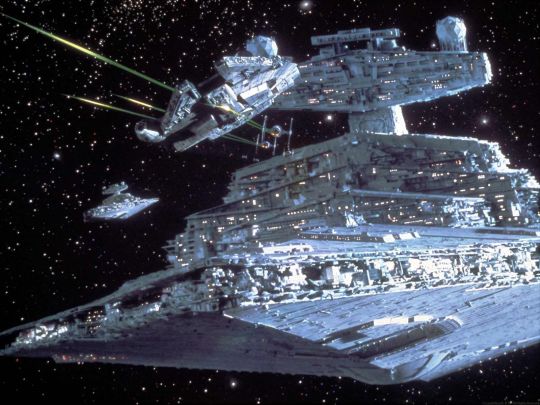
I was going to make a joke about blowing a quarter of your GDP in Star Destroyers, but have you heard of the South American Dreadnought Race? One of our dumbest moments down here, surely.
Add FTL, and things change, of course. Even very slow ships, that would take months to transverse a dozen light years, would be able to justify trade in luxury goods and passengers, for instance. This is not too far from real-life either, after all, European colonial empires had travel times in the months, and they had to install local administrations such as viceroys because of this, yet rhose places they were considered part of the same empire (most European empires could be rather considered a collection of "countries" and colonies, look at all the divisions of the Spanish Empire for instance). Faster and cheaper ships would of course, mean even more trade (here, I'm using 'trade' as 'communication between worlds', not necessarily implying capitalism, it could be mercantilism or even a command economy) between worlds, even perhaps the classic trope of agrarian and mining worlds feeding the rich core worlds. The Open Veins of Latin America In Space. Fun.
The speed of your ships and communications not only determines trade, but the power projection of your state (we can discuss 'stateless' societies too, there's plenty of fun to be had). If, again, your Galactic Emperor makes a Galactic Proclamation from the Galactic Palace near the Galactic Core (let's roll with that) and he has no FTL communications of any kind, it means that his commanding voice would reach the outer edges of the galaxy 100.000 years after, that is, almost ten times the history of agriculture on Earth. If he, however, has access to ships that can cross the galaxy in say, months, yes, perhaps he can have a series of vassals all over the stars (perhaps, we'll see…), and the faster things are, the closer they resemble our current fast-paced society, but not quite, given the available resources and space in… SPACE and the possible population, as we discussed above. As you can see, the speed of your FTL or lack of it determines everything.
There is another, more *realistic* option. Instead of individual FTL ships, you could have wormhole portals connecting worlds. This is more realistic in the sense that it's theoretically possible (though we have no idea on how to make one), but it also has some interesting implications. First of all, there is an implication that such a wormhole network would be expensive to build and maintain, requiring highly complex technology, material (I'm not sure what the hell exotic matter really is) and production methods, well, more high than what you'd expect from the usual. Second, it would be something preferably fixed, with hubs, planned routes and regular transit (and for writers, it easily allows you to map your universe). Such networks would be vital pieces of infrastructure, built and maintained by central authorities, drawing routes and transport hubs in space. Yes, indeed, almost like… space railroads.

OH MY ASTRAL EXPRESS WAS HONKAI STAR RAIL REALISTIC ALL ALONG? (last joke I promise)
There is also a very strange effect about wormhole networks. Time is relative, as you know, and this is not a metaphor, it literally "flows" differently on how fast you're moving. The "universal" "speed" of "time" "seems" to be the speed at which matter moves in an expanding universe (red-shift and blue shift) as I understand it, but as you approach light-speed, time flows differently in your frame of reference. Wormholes are strange in the sense that they connect space AND time, the observable time in both sides of a wormhole would be the same, and as such, places connected by a wormhole network will "be" at the same "time". This has been talked about by some authors who have considered about wormholes in the context of space civilizations, and it's called (STOP!) Empire Time. So a space empire might not only imply a state ruling over a population and a territory, but also over a time. I have no idea how this works and it frankly makes my head hurt, but here is an analysis of transversable wormholes if you want to indulge or hit your head against a wall.
Technology:
As an extension from the previous section: Of course there is no working FTL method known in real life, as far as we know, light-speed is the upper limit for everything. Instead of constraining you as a writer, this can be one of your biggest assets.
Because if you're doing a space setting, the existence of faster-than-light travel and its speed is the most important decision you can take about it.
Got that? Did I emphasize that enough? You don't need to actually explain HOW your FTL system works, you can do some research and invent something, but you need to be clear, in your head, what it can DO: How far and how fast it can take you. A FTL system that takes months to go from star to star will be very different to one that takes hours to span the Galaxy like the hyperdrive of the Millenium Falcon. A FTL system that is cheap and can be installed in any tiny ship like in the Elite videogame would be different from the ones in Dune where interstellar travel requires enormous motherships and lots of drugs, or a wormhole network that needs massive infrastructure maintainment and probably a railway starway worker's union, or the case of no FTL at all. This is, again, the most important decision you could make for your setting, bar none. Got that? Let's continue.
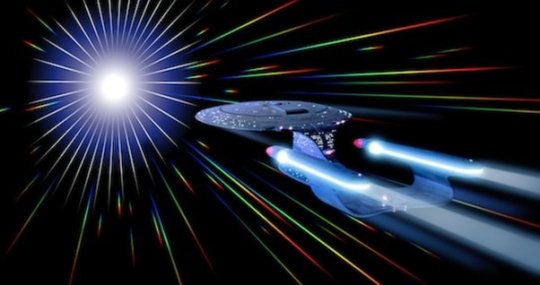
FTL is perhaps the only place in science fiction where I don't care about how it works, only about how fast it goes
Now, technology. Space empires, are of course, not possible without space travel being cheap enough (not talking about FTL, just regular space travel): shipping stuff to space should be about the same as shipping stuff by airliner or, well, ships. This is not unreasonable. Efforts are being made right now to lower the cost to access space, and while space agencies like NASA might look expensive, they are not NEARLY as expensive as the money wasted in say, stealth jet fighters or fucking advertising (people who say 'why spend so much money in space when we could fix our problems on Earth' seem to forget about that all the time. But I digress.). A technologically advanced, wealthy (as in production, not literal dollars) society could easily afford as much space exploration as they wish with no real effect at all in their quality of life, indeed, it would improve it. Space isn't as expensive as it seems. At its very, very core, a spaceship is just steel and propellant.
And steel and propellant are very, very easy (once you got the technical research to do it) to get in space. Asteroids are MADE of iron and metals, a single asteroid is richer than all of Earth's mines combined. Hydrogen is literally the most abundant element in the universe, and water is on plentiful supply (no need to steal planets for water) on comets and icy asteroids and moons. Carbon is apparently widely available in carbonaceous asteroids, and in our own Solar System, Titan, the moon of Saturn, is basically covered in hydrocarbons (yes, OIL IN SPACE). All those resources could be very much in demand for manufacturing on a planet like for example, a future Earth that has taken its industry up to space. What's more, it's only bringing stuff up from Earth/an Earth-like or more massive planet (fun sci-fi term for you: "down the gravity well") that's really expensive. Once you get there, you can get anywhere with enough acceleration and propellant. Once there is space infrastructure and industry (and I get a feeling that it might get up fast, given that space technology would need to be very autonomous and reliable), it can sustain itself without a mother planet. In fact, if there's something I imagine would be considered a luxury in spacer life, it would be truly organic things; plants, wood, meat, wool, and so much more.

i am average astronaut man i work 15 hours in the asteroid mines to buy one burger
Which brings us to the big question; what kind of life would be out there? After all, I gave you numbers of millions and millions of worlds, it's hard to imagine at least a few of those don't have alien life. This is the biggest outstanding question in astrobiology currently and so I won't pretend to even try to answer it (my personal opinion, if you must, is that complex Earth life is extremely rare, but by sheer number of planets, it might exist by hundreds of thousands in our galaxy alone). Instead, let's try to see how science fiction looks at it.
Heinlein, another of the foundational writers of science fiction as a genre, saw alien worlds as just another frontier to be settled. Rich alien fruit, fertile arable lands, and huntable or tameable creatures just waiting to be exploited, and alien species to trade exotic goods with (or conquer). While Heinlein was not the only and probably not the first to write this subgenre, he certainly got it popular, and lots of works on his same vein follow this "frontier spirit" kind of writing, where space is seen as the last frontier to be tamed by hardy colonists in a very yeehaw cowboy western setting, and you can actually see this replicated in many modern science fiction like Firefly and the more cowboy-ish parts of Star Wars. And yes, this is balantly an expression of the 'manifest destiny' Usamerican imperialist worldview.

lots of Politics all over this Science Fiction Adventure
And yes, this idea of 'habitable' planets ready to be colonized like in a 4X videogame is also not very realistic either. We haven't found any alien ecosystems yet, but as a biologist I can tell you they would be very different from us in ways you probably won't expect. We can discuss how convergent evolution could be, a world with oceans would probably have equivalents of 'fish', 'algae' and 'worms' (I can GUARANTEE there will be A LOT of worms), we could even find very, very similar life to our own down to the body plan. However, we most probably could not eat them at all (which might sound silly at first glance but is needed to have you know. agriculture.), or perhaps even live in the same planet as them. We live in a society planet where most of the plants and animals which evolved with us can't be eaten, and many of them are toxic. It's possible, entirely likely, that the alien equivalents of carbohydrates (ever heard of L- and D-Glucose?), proteins and other substances would be indigestible to us, allergenics, or outright toxic, probably in ways we can't even think off. It's likely we won't catch alien diseases, but that's because our cells (if they even have cells) are completely incompatible with their diseases, just look at how different animal, plant and fungi cells are, now imagine whatever the fuck might evolve in a completely different biochemistry from us. There would be no farmsteads and cowboys like Heinlein wrote, living in Mars would probably be more pleasant that living in a world where everything might be toxic, not because life evolved to be toxic, just because it didn't evolve with you. If anything, these' habitable' worlds would be treated like giant nature preserves instead, you can look but don't touch.
(In one of my own settings, I sidestep this by proposing panspermia, that is, the idea that life spreads across the universe by means such as comets (or aliens) and thus shares similaritites and can eat the same stuff. A bit of a cop-out, but it does allow one to get with similar kinds of life.)

NOOO ANAKIN DON'T EAT THAT PEAR IT EVOLVED HIGHLY TOXIC ALKALOIDS IN A DIFFERENT EVOLUTIONARY CONTEXT NOOOO
But humans, if the biophilia hypothesis is right, will need nature in their lives. This is where orbital habitats come in. You know, like the ones in Gundam? Orbitals such as O'Neill Cylinders, Standford Torii (yeah, that's the plural for Torus) as well as bigger and more complex thingmajings I will write their own post about someday, have been proposed since the 1970s with technology available then, and there is no reason why a civilization with an advanced space infrastructure wouldn't try building them and even be better at it. What's very nifty about orbitals is that you can really make them your own personal custom miniworlds. Designs like the O'Neill cylinder are big, able to house hundreds of thousands, even millions of people if build to the top, but why do that? Mess with the lightining, the rotation, or the interior to make them a winter wonderland or a tropical paradise. I expect that they would be built to feed space communities at first with food that isn't imported from Earth or grown in hydroponics, and later as places to live and customize however you wish; perhaps a community would pool resources together and say, hey, we want to make an habitat that looks like a Colombian cloud forest, or the Okinawan Islands. Once they get cheap enough, and given how abundant resources are in space they might be not even as expensive as most engineering projects here on Earth, I expect actually many, many people would want to live in them, and it could be probably be very affordable, and just natural for the people who are born and raised and live and die in them. Another thing about habitats is that they are mobile. Like I said, as long as you got enough propellant and propulsion, you can move anything anywhere in space. Even whole habitats could move and cluster together depending on the local politics. Perhaps, much like city-states were the basic building block for countries in antiquity, in the future, the basic organization bloc would be the Orbital. You could have alliances of orbitals forming complex political intrigue inside a single solar system (yes, like in Gundam).

OH MY PLASTIC MODELS WAS GUNDAM REALISTIC ALL ALONG? (I lied)
This all might make space empires pretty much an unnecessary anachronism. Habitats can grow their own food and resources are plentiful once you have the right technology. They can also be mobile, so they could act like migrating cities at will, choosing to stay with like-minded "constellations" or strike out on their own without the dictates of a central state. It almost looks like an ideal anarchist society.
Or does it?
There is something very important to keep in mind about life in space. The technology, that is, habitats needed for life in space will require lots of maintainance and resource management, which implies there must be strong coordinating bodies with very, very strict rules so that shit doesn't blow up and you lose all your air into space, or the resources of an habitat are mismanaged and you end up with a food or water or even oxygen crisis. There is a reason why space exploration is done by state agencies or corporations with huge state backing. Another of Heinleins's favorite tropes, Libertarians in Space, would be impossible in such a situation. Actually, in ANY space situation, and this is why this section is in technology. Living in space requires you to be able to maintain complex technology and manage resources. None of this can be done ad-hoc or be left to individualism, you have to have Rules and follow them to the letter. And also, the effect of living in your 'own little world' would probably mean people have a strong indentity sense towards their home habitat. This will mean a more communitarian attitude. But before you think I'm waxing poetic about utopian habitat cultures, keep in mind that this also can mean an authoritarian mindset. After all, cults and authoritarian regimes do have "strong communities" too. An habitat could be everything from a well-managed place with responsible citizens who look for the welfare of all, to a closed society where everybody does as they're told as long as the tech works. On the other hand, I doubt habitats in a single star system would stay isolated. They'll probably trade and communicate with other habitats, forming constellations and power groups, that would prevent this 'closed system'. However, I doubt they would be too amenable to interstellar authority. Who the hell do those people from another freaking star think they are to tell us what to do in our habitat?

To be serious for a moment, habitats can be really cool places in science fiction. Especially if you imagine they could host all sorts of enviroments, from the tropical to the polar.
As an addenum… what if you really want to live in a planet? In places such as Mars or the Moon, things would be… pretty similar to orbitals actually. Habitats separated by vast expanses of barren nothingness, only now a planet instead of space (better for maps, at least). But that isn't what you're thinking, right? What if you wanted to feel the open wind and sky instead of a canned world? Well, this is where terraforming comes in. Transforming whole planets is something theoretically possible, but that would require massive investments of resources, more massive than anything we can imagine, and time, centuries at the very, very least. So stupid ideas like "terraform Mars to escape Earth", which as far as I know is only held by dumbasses like Musk, just don't make sense. It doesn't mean that terraforming itself is a worthless idea, it is a very appealing one. No matter how cool you can make your habitat, it won't ever be Earth. It won't ever be a self-sustaining biosphere with its own ecosystem that could last millions of years. For that reason, terraforming is attractive, it's something way more than an artificial "can" orbital, it's a new living world. There is a certain mystique into bringing lifeless worlds to life, but I expect that instead of the dumb Musk "ESCAPE EARTH" idea, the motivation for terraforming would be to recreate Earth, perhaps for conservation reasons (you could have whole planets as natural reserves), perhaps for tourist reasons, perhaps for spiritual reasons or even artistic reasons. On the other hand, the methods you can use to terraform a lifeless planet can also be used to 'terraform' living planets, as we've long seen in our own world… this could be done with hostile purposes. I would expect us to be better than that, but we simply don't know.
To close this section and give this post an conclusion, I think that, since there are no real borders in space, then empires, countries, polities, whatever you wish to call them, will be formed by stacking building blocs in loose alliances or confederations. The most basic would be habitats, then constellations of habitats, then inhabited planets (though I doubt any but the most populated ones would qualify), and then star systems, but little above that, and I expect up to a certain, difficult to calculate limit of population and area (though way, way below even a fraction of a speculated galaxy), things would be just impossible to manage. The effort in bureacracy, infrastructure and state control needed to project power out of a star system and the sheer scale of space probably won't ever justify empires, much less galactic empires, but you could have very interesting variations on the theme.
Fun Stuff!
So, let's play a little with what I've told you. I'm going to write a few short scenarios that might be fun takes on the "Galactic Empire" or "Space Empires" you might be familiar with already:
The Poleis Model

When the Greeks established their colonies around the Mediterranean, they didn't do it with the expectation they would be part of the same state or empire. They founded new poleis, new city-states, based on the constitution of the mother city (hence metropolis) but fully independent. The Phoenicians were much the same, with some of the daughter cities (Carthage means literally "new city") eventually becoming new cultures far from their home cities. Similarily, why should interstellar exploration mean the spread of a united state with a capital and all? Imagine that when interstellar ships depart, they do with the idea that they are going to create a completely new home, a new poleis, not an extension of the nations or organizations that sponsored them but rather more of a 'child' culture light years away from their motherland. As they develop in mostly isolation from each other, they will become new cultures on their own, while retaining ties to the ones most similar to them. This is, in my opinion, the most realistic scenario without FTL. With FTL, however, things get more interesting, as of course, Greek and Phoenician and other poleis didn't remain isolated light-years from each other, they had permanent contact. With FTL they could organize in leagues, perhaps even alliances for the ocassional military campaigns, trade and exchange of ideas, tourism and industry, and of course the Olympics.
The Wormholes Always Run In Time Model

As I've said, wormholes are pretty much like space railroads. Railroads, like other big infrastructure projects, need a centralized authority to be built and maintained. And once you are the central authority that does so, you're already in charge of the biggest arteries of trade and communication. Which makes you basically an empire, officially or not. In fact, this is the closest I imagine a space society would resemble the states we're familiar with here on Earth. If you have control over transport and the hubs of trade and politics, and that transport and communication network allows you to implent your policies, your rule might go very far indeed, and indeed, your main hub might be a great capital, the main station of known space. Now, perhaps you might be imagining a literal space empire with nobles and all that. Why not instead something else? The Socialist Interstellar, connecting the many worlds of the galaxy through a five hundred year plan of railroad wormhole construction in the path to communism... However, this would mean that people outside of the wormhole network might develop in different ways, perhaps the equivalent of nomads to the great settled empires of antiquity. And given what I've briefly touched on Empire Time (*breakdances*), the expression "the portals always run in time" might imply even more than just an aphorism.
The Civilization Cluster Model
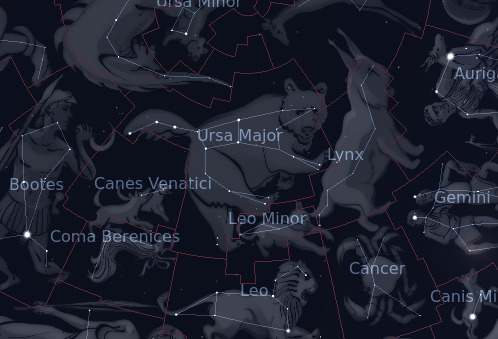
I'll admit this is taken from Poul Anderson, as quoted in Atomic Rockets, to which I owe an inmense debt for this post and so much more. The idea is this; space is big, as is well established. Even with FTL to shorten the distances, even if you could cross the galaxy in a few weeks, the sheer number of stars is still insanely massive. Why should any civilization 'colonize' those stars dot by dot, what value is there in invading or colonizing planets with incompatible biochemistries? And how could even begin to think how to administer a thousand different worlds, each one as complex as Earth itself, let alone an entire galaxy? In this case, civilizations, instead of spreading across the galaxy, would mostly remain in their own 'civilization clusters'; even with FTL, there are so many issues closer to home that the idea of projecting power outside is ridiculous. There would be trade, exchange of ideas, and so much more between these clusters, but never constant enough and never with the authority necessary to create a "Galactic Empire"… the worlds are too many, too diverse, too populated and too far away for that. An interstellar traveller could roam the Galaxy for years exploring these clusters spread away from each other, with their own unique idiosyncracies and civilizations inside, and then a vast expanse of mostly nothing outside them. Basically, space is too big. I like to see them as constellations among the dark sky, hence the artwork.
The No Man's Sky Model

To live in space, you need complex technology, but also resilient and durable technology ready for any kind of situation, easy to repair and replace. So eventually, I believe designs would be standarized so much that every astronaut will carry or own a collection of standarized tools (somehow this reminds me of prehistoric tool cultures). Now, even with FTL, there's perhaps little material incentive for people to leave their comfortable homeworld or habitat to live in cold space. But some will, perhaps because of the sheer thrill of it, perhaps very small bands of families or friends. With a standarized tool kit for any ocassion, these small bands would spread across space, much like ancient humans spread across the world. But instead of creating space empires, without a fixed industrial base, they would be nomads. Which doesn't mean they would roam aimlessly, they would be seeking new biospheres, new resources and new cultures, and gathering in temporary or permanent market places, festivals and pilgrimages. Perhaps they could even be the majority of humans in space, while most others stay cozy on Earth.
...
This was a very long post and it took a lot work to make, so I hope you had as much fun reading it as it was for me to write it. If you did, and if you would like to see more, I would be very, very grateful if you donated to my Ko-Fi below. Anything helps a lot especially since my country is not doing great at this time governed by a libertarian idiot (not even the fun space kind), and even a little tip encourages me to post more, I'm always working on your suggestions! You can also contact me by DM or asks if you need any help with your worldbuilding or just want to rant with me a bit! See you next time, and thanks for reading.
#worldbuilding#(reference)#again amazing post#sci fi worldbuilding is tricky when you can't really comprehend how big space is#atomic rockets helped me a lot and this post is really inspiring!#still need to read the other one on empires
248 notes
·
View notes
Note

Please enjoy this incomprehensibly mechanical photo I took 13 years ago of a 737-400's main gear bay (I stood on the ground up into one of the wheel cutouts to take this, it felt very intimate)
utterly delicious tbh i love incomprehensible photos of mechanical bays THANK YOU so much for this
14K notes
·
View notes
Text
Worldbuilding in Flat Worlds
Oh, so you think I can't do worldbuilding on flat worlds?

So, you might or might not have run into my rather hyperbolic advice that the first rule of worldbuilding is placing your equator. I still stand for it, and one of these days I would like to expand on that… But many on the notes have asked, and this is fair since it's worldbuilding: what about if my world is flat? Or a cylinder, or a ring, or other such shapes? While I can't cover every shape here (though I would like to try, eventually) I can tell you one thing or two about Flat Earths, Flat Worlds, Disc Worlds, however you would like to call them, and how you can do worldbuilding on them. You will be surprised at how much myth, fantasy and science fiction can mesh here. I apologize in advance for the lack of hard numbers in such things like gravity and orbits, but I can expand if you'd like.
This is going to be a LONG post, so more, way more, under the cut:
First of all, of course many cultures have thought of the Earth as flat, it makes intiutive sense. But this idea wasn't only about a flat Earth as a disc in the middle of nothing. This belief was also accompanied by many other beliefs about the sky, and what's under the earth (while I don't want to generalize, you see this sky-earth-underground motif in most cultures) and how the gods or God shaped it; so, not only the shape of the Earth, but the entire universe, a cosmology. While I could go into much depth on various cosmologies around the world (though I suggest you do!), I will explain the two "flat earths" that are more familiar to us in the Western world; the Hebrew and the Greek cosmology.
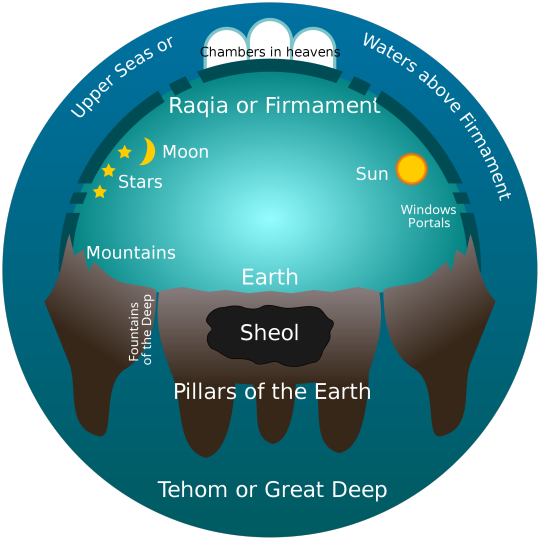
They usually don't teach you the cool lore in Sunday school.
So, what we see in the Hebrew cosmology is a flat earth, yes, but with a firmament that, unlike some might think, does not separate the heavens (as in sky) from the Earth, but rather creates a "vault" with Earth inside from the primeval ocean, as the firmament IS the sky. As you can read in Genesis 1:6-8, in the second day of creation, God divides the waters "under" and "above" the firmament. This idea of a primeval, chaotic ocean from where the creator God(s) create the world is a feature of Mesopotamian mythology (as well as many other unrelated mythologies), and I would love to expand on it, but let's focus on what the "flat" Earth looked like to the ancient Hebrews. You have a flat earth with the foundations on an endless abyss of water, which goes all around the firmament, an inmovable (the Bible mentions this several times) sky where God placed the Sun and Moon and stars to illuminate the Earth, and floodgates where the water for rain, hail and snow (and also the Great Flood) came from. And also Sheol, and the abyss of water, which along with the "heavens" in or beyond the firmament, take into more spiritual characteristics. I could go on, but as you can already see, this is a very complex cosmology, far from a single flat disc floating on nothingness.
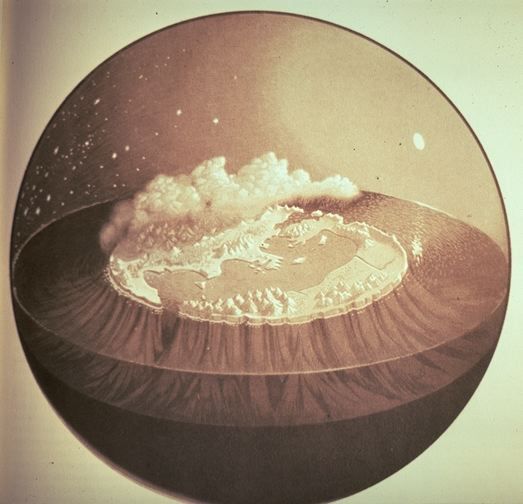
The world according to Homer (the other one)
Let's move on to the Greeks. Now, the ancient Greeks, like Homer, initially seemed to believe in a flat earth, with many parallels to the Mesopotamian (and Hebrew) conception of the world, with a firmament and a landmass surrounded by (or floating on, as per Thales who believed EVERYTHING WAS WATER) an ocean with Greece as the center (see below). However, this conception evolved over time. Anaximander imagined the Earth at the top of a cylindrical, inmovable pillar, but more interestingly, attempted to explain the movement of the Sun and the Moon, believing them to be, to quote Wikipedia, "circular open vents in tubular rings of fire enclosed in tubes of condensed air" surrounding Earth. This idea was later refined by Plato and Aristotle as 'celestial spheres' as paths for the planets (this included the Sun and the Moon) to wander. This concept was further explored by Plato, Aristotle, and many more, to extend to the rest of the planets (which also included the Sun and the Moon), as objects moving across "celestial spheres" inside an sphererical firmament. At this point, Greek philosophers were already thinking the Earth was some sort of sphere, even if only because a sphere was considered the 'ideal' shape, but also because they had started to notice that the Moon was also spherical, boats went under the horizon, and the shadow of Earth during eclipses was round, among many other things that current Flat Earthers don't care about. Eratosthenes was the first to calculate the sphere of the Earth with remarkable precision (you probably know this story if you've watched the old Cosmos with Carl Sagan), and from there, it was mostly accepted in the Hellenistic world that the Earth was in fact round. It was finally Ptolemy by his incredibly detailed astronomical work for the time who finally cemented this system of a round (NOT FLAT!) and unmoving Earth as the center of the universe and the celestial spheres.
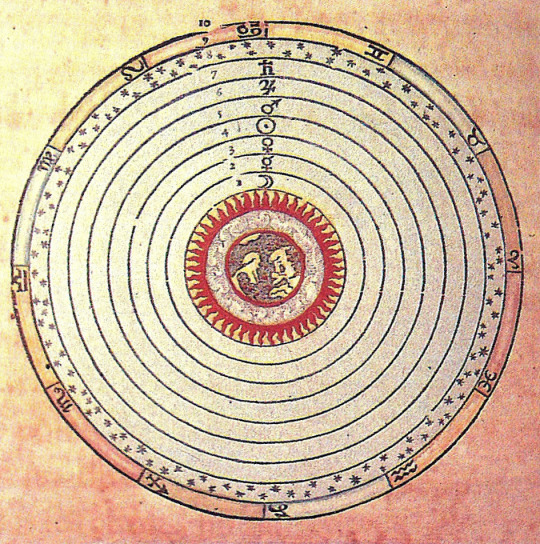
The Ptolemaic Universe. Not flat! Notice that the sphere right above Earth is on fire. This is because Earth was believed to be composed of the most base classical elements (Earth and Water), surrounded by a sphere of Air, and then later the sphere of Fire where the Sun orbited. The rest of the spheres were often associated with "Aether" or "crystal", but that's for another time.
As a note, as the Hebrews entered in contact with Hellenistic and later Roman civilization, they also adopted the concepts of the round earth and the "celestial spheres", which meshed really well with the concept of "the heavens" and the "circle of the Earth" mentioned in the Bible. With the rise of Christianity, this fusion of biblical and hellenistic cosmology endured for a long time. It's a myth that medieval Europe thought the Earth was flat, they all knew and teached the Earth was round… and fixed as the center of an universe made up of celestial spheres inside an spherical firmament of fixed stars. That concept endured much longer in Western thought, but that's for another time.
One interesting thing about flat earths in ancient cosomologies is that they often took the form of a circle, and that circle had a center. The center of the world. For the Greeks, it was the Omphalos stone in Delphi (this is where the expression 'navel of the world' comes from). For the Hebrews, it was the Temple at Jerusalem, and later medieval Christian maps (the T-O maps) set Jerusalem as the center of the world. This concept of a 'center of the world' in comparative mythology is called 'axis mundi', and as you can see, it takes particular importance in a world that is believed to REALLY have a center.
So, why the history lesson? It's fun, it might give you some ideas, but mostly it's to show you that the concept of a flat earth does not only imply a flat planet (indeed, the vision of Earth as just another planet took long to arise), but also a whole cosmovision of the world around it. To be fair, our current understanding of the universe, with round planets orbiting stars and galaxies and the Big Bang IS also a cosmovision. One based on scientific observation and understanding, but cosmovision nevertheless.
But perhaps what you wanted with a worldbuilding post is a world that is flat. Like a regular planet, just shaped as a disc. Let's discuss that. First of all, is such a thing possible to arise naturally? Most probably not. While I'm sure there might be at least one exception by some freak accident in the universe, maybe more, as a rule gravity tends to compress large objects into spherical shapes. A disc would eventually break up and become an asteroid field, or it would spin and bulge into a 'pancake shape' and eventually an oblate spheroid object, with a big equatorial bulge (yes, I'm going to use the word bulge a lot here). This shape might actually be common in many fast-spinning objects (that don't break apart) across the universe, and in fact you can find it in stars such as Achernar. Earth itself is a geoid, flattened at the poles and with an equatorial bulge (told you).
However, this does not mean that flat worlds are impossible. You could assume that the gods, or an ancient alien civilization (there's a lot of overlap here) made this disc of an indestructible material. How would such the dynamics of the world work then? Finally, here, is where our worldbuilding gets interesting…
Gravity:
Gravity on a disc would be very peculiar. To make a long story short, it would be stronger at the center and weaker at the edges, with the gravity pulling towards the center, which technically is the pole (I'm going to say South Pole because I'm from the Southern Hemisphere). So, if you threw a ball, it would be pulled towards the center/pole rather than the edges, and this pull would be in a perpendicular way, decreasing the farther you go from the center:

A very ugly drawing of an speculative flat world, with a core made of ~magical~ indistructible material, covered by earth, water and air. Note the direction of gravity and how water flows into a bulge on the center.
This would make for some curious effects; water and air would inevitably flood all the way to the center of the disc, where it would make a bulge, the sea level raising in a notable way there. One way to avoid this is to make the disc spin on its center, like a roulette, the centrifugal force of such a spin would make the gravity spread to the edges. Unfortunately, it's hard to calculate how fast would it be needed for it to 'even out' gravity in the whole disc. I can be sure it would be enough to tear normal worlds made of rock and metal apart, so this flat disc would have to be made of a strong, magical material (which really works well with the mythical 'God set the foundations of the Earth' motif)… or a complex structure of orbital rings inside (ultra-advanced tech artificial structures that transport matter in an opposite way to the spin, generating enough momentum so it doesn't pull apart), or some other kind of exotic matter. The spin would probably would not be noticeable to the inhabitants of the disc in their day to day lives, though, as the 'fixed' stars would move, I'm sure the inhabitants would incorporate in their calendars.
One important thing to remember about gravity is that it's not based in the size of an object, it's based on mass. You could have a (regular) planet smaller than Earth, but with the same gravity, so long as the mass was denser. Similarily you could have huge planets with Earth-like gravity as long as the inside is less dense (bubbleworlds, another thing I'm dying to talk about). So you could have, for example, a disc the size of Earth made of a magical or ultra-tech material (let's call it Newtonlith) where certain places inside the disc would be dense to create gravity fields inside the disc. In a normal setting, this would break it apart, but perhaps, if it's in a form of a spread out gradient, it wouldn't. This would have some very odd effects, which I leave to the reader to imagine.
(I'm of course, dismissing stupid concepts from modern flat earthers such as "Earth perpetually falling down" or "gravity doesn't exist", but I have to say, they do have some wacky worldbuilding)
The Edge and The Other Side:
So, if you get to the edge, gravity would feel strange, making it harder to you to keep going since it's pushing you perpendicularily to the center, until you actuall walk into The Edge, and gravity would feel level. It would be like walking on the oustide of a wheel. However, it's hard for me to imagine what this "edge" would look like. Assuming the disc spins, I would expect the edge to get thinner and thinner, smoothing out rather than being like a sharp "coin-like" edge… or, if it spins fast enough, in fact, more of a sharp cliff or, how could I define this? "Horizontal mountain chain". However, again, we're also assuming this whole thing is made of some magical or ultra-tech material, so the edge might as well be a flat expanse imposible to erode, like a coin edge, which might let you, quite literally, walk around the circle of the Earth. In fact, some enterprising civilizations might make a railroad or transport system all around the circle. Another thing about the Edge is that, because all the water would go to the centers of the disc, it would be very dry, and it also would have winds constantly circulating in the direction of the spin. No wall of ice, at least not as I imagine it; as we'll see later, the temperature on a flat Earth would be rather uniform unless there are other conditions affecting it.
One important thing is that, assuming this is a disc *floating* in space (no elephants or turtles…), is that the other side would be as habitable too. Remember, this case is actually one where the centers of the disc are two poles, and the edge is actually the equator! (HAHAHAHA, TOLD YOU THE EQUATOR WAS IMPORTANT, EVEN IN FLAT WORLDS) So yes, you could, in a way or another, cross over the edge (the equator!) to another whole new world, cross over to The Other Side. Assuming, of course, they get light and such, which is the next point…
Before that, though: regarding horizons; no, there wouldn't be a horizon in a flat world. You could see pretty much all the way until something like mountains block your sight. It's hard to find good estimates on exactly how far though, but humans can make out faint details up to 3km away in good conditions (coincidentially, that's around where the 'horizon' is in our Earth) and lights up to 48km away. Insert your joke about Legolas here.
Orbits, Day, Night and the Sky:
How would day and night work? There are Options.
Again, assuming our magical/ultratech indestructible disc, it could spin on an axis so that each side faces the star it orbits, like a spinning coin. This would be a weird thing, especially if the planet already spins on its edge/equator, but not physically impossible. The orbit of Uranus is similar, with one pole facing the sun during summer and the other during winter, but that means an almost century long day in its case (a year in Uranus is 84 Earth years) and a similar long "day" in an Earth-like orbit. But if this world was created to spin much like Earth, there won't be that much difference between our day and night. You could even tilt it to simulate seasons.
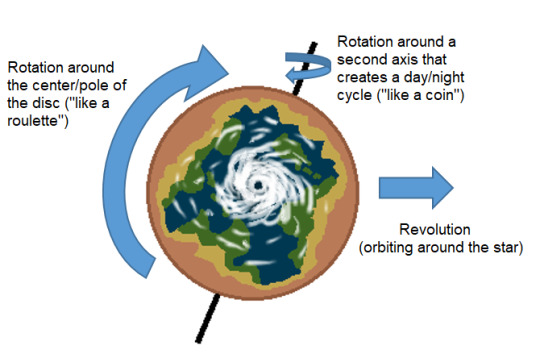
An example of the movements of a flat world given the above; rotation on its axis (that is, the center of the disk, rotation in another axis "like a coin" to give night and day, and revolution around a star. I also went the extra mile and gave it a climate like I will discuss later: a parched edge without water, with increasingly rainy desert, savanna and rainforest as you get to the center, and at last the central sea with a perpetual storm.
But I digress. You probably aren't here for a boring normal planet that orbits a star, no, no. You want the full mythical world experience, you want a world where the Sun and the Moon spin around the circle of the Earth, and fuck Copernicus. Let's leave aside what those 'luminaries' actually ARE for now, they can be some sort of magical tech objects or literal gods. How would that work?
You could have two kinds of luminaries here. The clever folks at the Flat Earth Society imagine a sun and a moon hovering over the Earth, spinning in a circular orbit about what we call the equator (in our round Earth, of course) as some sort of giant spotlight 32 miles across and a few thousand kms away, jumping and falling out of view, as I understand it. Same with the Moon. For a more classical approach, you could also have a sun and a moon orbiting your disc, which would be interesting, as the other side of the disc would also be illuminated while the other one is dark (in many ancient myths, the sun went into the underworld at night)

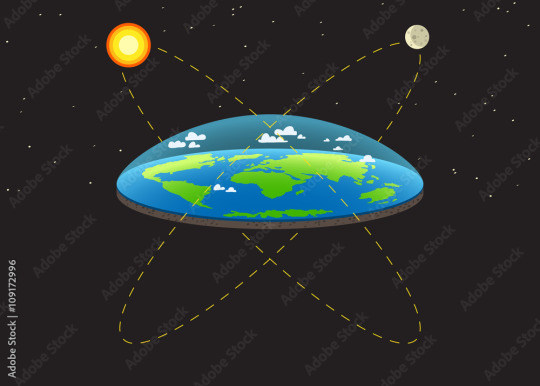
The two ways you could have mini-suns: either hovering above your disk or orbiting it. I was too lazy to make a graphic, so thanks to the Flat Earth Society I guess.
Like I said in the beginning, I haven't done the calculations on how such orbits would work, other that they would be complex, and not natural or stable at all. But after all, suns 32km across that hover over a flat world aren't exactly natural. If there is a place to insert gods and magic shit, this is one, though a fusion or black-hole powered spotlight that completes a very complicated orbit following ancient programming is also an option depending on what kind of setting are you doing. You could watch some videos of people debunking actual flat earthers to get a few ideas on how they explain the whole sun thing (spoilers: they just don't believe in eclipses, which indeed would be impossible here, unless magic is involved).
Both options have VERY important implications on the climate. The first one, with a disc orbiting a star and spinning to get day and night, would mean that the disc would get the same amount of light all over it, thus having the same overall temperature, without any latitudes. The second one(s), depending on the orbits of the suns, means you could have "tropical" areas and cold areas depending on where the sun's "spotlight's" points, either as a regular orbit over an equator, or a more complicated one that might not correspond to what we would expect. Funnily enough, Terry Pratchet's Discworld's sun has such a complicated orbit it's never really explained, it even crosses the legs of the elephants upholding the Discworld sometimes.
Speaking of which, THE Discworld of course moves across space on the back of 4 elephants standing on the shell of Great A'tuin (awesome name for your Torterra in Pokémon btw), and its movement is apparently so significant that the astrologers have to regularly change their zodiacs. And indeed, a flat world would also move around its galaxy if it existed, and carrying its own fantasy sun, it wouldn't need to orbit any star to be habitable. Our own Sun is moving with our entire solar system on tow (or rather orbit) at a speed of, holy shit I had to look this up, 828,000 km/hr. However, even at this speed, the stars seem fixed to us, a whole spin around the center of galaxy (a galactic year) takes 225 million years. Still, the stars are moving like us, in fact, some constellations are in slightly different positions from ancient times, just not at the pace in Discworld.
As a final note, I believe a moon with enough gravitational pull would cause tides as it orbits the flat disc much like on Earth. Would be funny if an actual normal moon like ours orbited a flat world, with a small sun on inside its orbit (not too far from the Ptolemaic universe, actually)
Geology and Climate:
Like I said, we're assuming this flat world is made of either some sort of ultra-tech exotic matter, or was just straight created with magical material. So you would think geology would be pointless to discuss, right? Not so fast. There's some assumptions we can make. First of all, there would be no plate tectonics. Plate tectonics, of course, need an active mantle and core, which a flat world just cannot have at least on the size of Earth. So no earthquakes or volcanoes, unless there's magic involved (Terry's Discworld, which is based on Hindu mythology, played with this by having the elephants holding it up move ocassionally, causing earthquakes) So, a world with less natural disasters, wonderful, right? Sure, but in the long run (millions of years), it's tectonic activity that keeps the Earth alive, replenishing CO2, moving the continents around stimulating evolution and changes in climate and the water cycle. This can be replaced by some magical means, though that means that Something Magical is doing Stuff in your world, (you know, besides the whole flat world thing) and you better contemplate what does it mean for your setting/story. Similarily, one strange thing about geology in flat worlds is that, as mentioned, assuming gravity points to the center(s)/poles, there would be a pull towards there, so mountain peaks would be taller and pointing towards the edge of the disc, and as we will see below, also face greater erosion from there, as the winds and water would also move towards the center/pole.
What about climate? That one depends on how your light sources work. But in general, without poles or equator (well, they exist, but you know), the whole disk surface(s) would recieve equal light all year. Which means no seasons and not climate variation. Seasons are possible by tilting the disc, but overall, the climate in a disc world would be stable. Or would it? By the sheer morphology of a disc, not only water would flow into the center, but also air, and in the case of a spinning disc, it would spin into it. Air would flow into the center into powerful winds: how powerful? Difficult to say, but perhaps geography like mountains and hills could moderate them. If there was no spin, I imagine both water and air would accumulate in a large inner sea (as water would, in one way or the other, flow towards it, and water cannot be denied) and high pressure which could be an odd bulged sea with surprsingly calm weather. However, there's another option. Astronomers have studied tidally locked worlds, worlds where one side faces their star all the time. In this case, the convection currents flows from the light side flow to the dark side, creating strong winds and perhaps, assuming there is water, a perpetual storm in the light side. This has a parallel in our case, as the air in a flat world will all spin around the center, with no other way to go, and with it, it will be where all the heat and energy of the atmosphere (atmodisc?) accumulates. In this world, the center of the world (or at least, this side of it…), the axis mundi, would be the eye of a gigantic eternal typhoon.
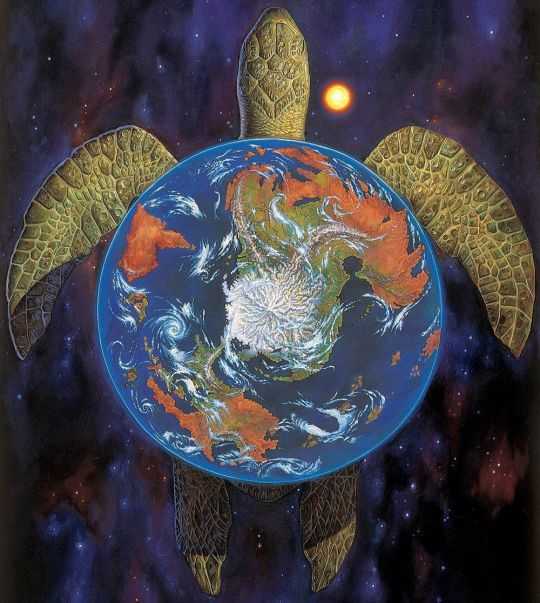
OOOH DISCWORLD I'M HOWLING TO THE MOON
What would geography, life and culture be like in such a world, given all the things I've told you? Well, that's the most fun part. It's up to you to imagine it. I personally don't find flat worlds all that engaging (sorry, Terry), I feel more comfortable with my good old spherical worlds with tropical latitudes and all that, or other more futuristic stuff things like ringworlds or Dyson spheres (which I hope to cover in another post). But I hope I gave you enough information and ideas so that the ones you might create are both original and believable.
Thank you for reading this, I hope you enjoyed it and it inspired you to do some worldbuilding! If you would like to see more, I would be VERY grateful if you gave me a tip and some suggestions in my ko-fi below, especially as my country here in the other side of the disc is under the rule of a libertarian fascist idiot, so every little help does indeed help a lot! Follow me and stay tuned for some more wacky worldbuilding and rants about the Southern Hemisphere.
435 notes
·
View notes
Text



Ladies of the Knight - Chapter 4 - Part 9
Read Chapters 1-3 at http://LadiesoftheKnightComic.com
Kofi - ko-fi.com/fionacreates
99 notes
·
View notes
Text

Gouache on paper, 10×15cm
127 notes
·
View notes
Text


happy valentine's gay 💖💕 have some Gabi & Euna in a world where they stop being stupid and oblivious about their feelings
gemini heist wip intro | art tag | instagram
#bravo les lesbiennes#sorry for tagging this with a niche French meme it's the first thing that came to my mind#i want them to be happy#cool art
42 notes
·
View notes
Text

Beetle mom and beetle kid in their mushroom house
17 notes
·
View notes
Text
i need recs for pieces of media that has magic / fantasy in space (or otherwise sci fi setting) pls!
#alastair reynolds revenger trilogy#it's space opera but a bit steampunk with weird space magic#brandon sanderson's cytonic series#tho the magic aspect is more present after the first book
14 notes
·
View notes
Text
youtube
short, shoddy trailer for my animated project Two Is Dead
1K notes
·
View notes
Note
Do you think that when the twins are little they would interrupt Vader on conference holocalls a la babies on Zoom
i honestly started writing up an answer that began with, "it really wouldn't happen," because i was fully prepared to write out a logical argument for why such a thing would never happen. the argument began, "it would be highly unprofessional (and terrible parenting)" and i had to pause, gather my bearings, and quickly realize that vader's idea of being professional is strangling his coworkers, and his idea of parenting is maiming.
that said, i don't think in any universe that vader raises both of the twins that he ever unaware of where they are. a) he has psychic powers, and b) he is batshit insane specifically about people he loves dying, are you kidding? he is not normal at all, and not willing to be. therefore my conclusion is: if the twins interrupt Evil Space Zoom Call, it is, absolutely, because vader deliberately allowed it. and we've established that he meets all conditions for allowing it.
i feel he would allow this in the following circumstances:
to interrupt tarkin without having to be as direct about it as interrupting tarkin himself
a useful distraction from pointless tedium
to prepare them for the realities of ruling the galaxy, as they will inevitably do, surely nothing will ever occur to prevent them from ruling the galaxy with an iron fist, and surely they will also want that, absolutely no reason they could maybe not want that and no feasible reality in which they do not want that
this is just me, but i fully believe vader is functionally blind. he's collected enough various injuries (electrical injury alone can cause cataracts) that would impair his sight in ways you can't correct with lenses that i genuinely think he is visually impaired enough that "reading written language" is quite difficult. but he is also a wizard with precognition. if his magic 6th sense chirps TURN LEFT NOW he's going to do it, fuck yeah. and 90% of his life, this is no big deal, and the other 10% are like Space Emails. this is to say: he would totally make those children read inventory spreadsheets to him. he is an evil wizard in a children's film, and this is what i imagine most children find evil, and darth vader is just the evil wizard for the job. anyway: if the Evil Zoom requires document reading, vader makes them read it.
815 notes
·
View notes
